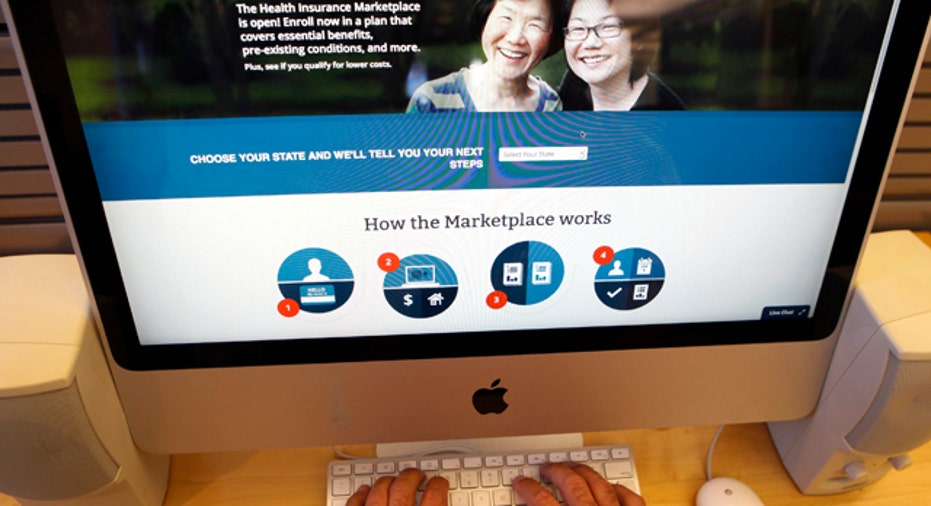Forget Enrollment, There’s Another Major Piece Missing from ObamaCare

Much emphasis has been placed on enrollment stats as the Affordable Care Act’s inaugural open enrollment period comes to an end. But there’s a key function on the federal exchange that remains inactive: the mechanism to reconcile payments between the government and insurance companies.
This “back-end mechanism” has been missing for the entirety of open enrollment period, which launched Oct.1, meaning insurance companies have had to manually bill the government for subsidies and cost-sharing plans, a procedure that’s being dubbed an administrative nightmare.
An insurance industry source close to the matter says insurance companies have been participating in a manual workaround over the last five months, which has been “an incredibly labor intensive process.”
Right now, insurance companies are manually billing the Centers for Medicare and Medicaid Services for all subsidy and cost-sharing plans. If a person is eligible for a $250 subsidy toward a $450 plan, once he or she makes their $200 payment, the insurance company would continue to wait on the government to complete payment. The enrollee would remain insured all the while.
The current procedure undoubtedly leaves room for error both on the insurance provider side and the government payment side of the equation, the source says. “This is certainly is not the most efficient way of doing it. It will be critically important that the systems are tested before enrollment period next year, and that there is enough time to test it before it goes live.”
The government is “committed to ensuring health plans receive timely payments of marketplace financial assistance,” Aaron Albright, spokesman for the Centers for Medicare and Medicaid Services said in an email statement.
CMS continues to work on the back-end system, although it is not yet clear when it will be up and running.
“We continue to make progress on the financial management system, which will eventually be the mechanism for making payment and reporting enrollment data as part of our automated system. An interim process is in place to make these payments as we continue to build a more robust, automated system for the long term. We have been making progress with our work on the back end, automated payment system that will replace this interim process. Our tech team is working 24/7 to get this system ready,” Albright says.
The current manual entry process has been checked--by hand--by insurance companies, according to the industry source, with thousands of enrollees coming into the system.
Subsidies are available to help reduce the cost of coverage purchased on Healthcare.gov for those making up to 400% of the federal poverty level—$45,000 for a family and $94,000 for a family of four. The federal exchange serves 36 states nationwide.
Reconciling Payments for Enrollees
Bob Laszewski, author of the Health Care Marketplace and Policy Blog, says the missing payment mechanism is contributing to the lack of clarity over enrollment numbers.
“The carriers can’t automate reconciliation, and don’t have a billing system—everything is done manually and the carriers are in a bigger and bigger mess,” he explains. “This will be enormously complicated once its fixed. The administrative headache is just incredible.”
Enrollees have to stay on the enrollment roll for 90 days, even if they don’t pay, Laszewski says, and the “non-payment” also includes individuals who have potentially paid their portion of the plan, but are waiting on the government to complete payment in regard to subsidies.
Last week, the Department of Health and Human Services reported 5 million people have selected plans on both the federal and state exchange, but has yet to reveal how many of these people have paid their first month’s premium. The insurance industry typically considers a person enrolled when they have made their first month’s premium payment.
HHS Secretary Kathleen Sebelius told lawmakers earlier this month she didn’t know how many people have made their initial payment. However, Laszewski claims insurers report these numbers to the administration on a rolling monthly basis. “They don’t want to have to write enrollment down by one million,” he says. “The administration could have accurate data next week if they wanted to: on April 5, every insurance company on the ObamaCare program will know how many people for the month of March have enrolled and paid for coverage. They have the number to the single person.”
Laszewski was among the first to report that nearly 20% of enrollees had not yet paid their first month’s premiums.
If a new system is not in place by November’s open enrollment period for 2015, Laszewski says insurance companies won’t be pleased.
“I think most carriers would pull out of the program,” Laszewski says. “Everyone believes this will be up and running in a month or two. If not, we will have an administrative nightmare. If I were an executive in a program, I would pull out—you can’t run your business. You don’t know what the premium is, who you are covering. I can’t imagine any carriers staying in the program, but I do think it will be fixed, so I hope we won’t be in that situation.”